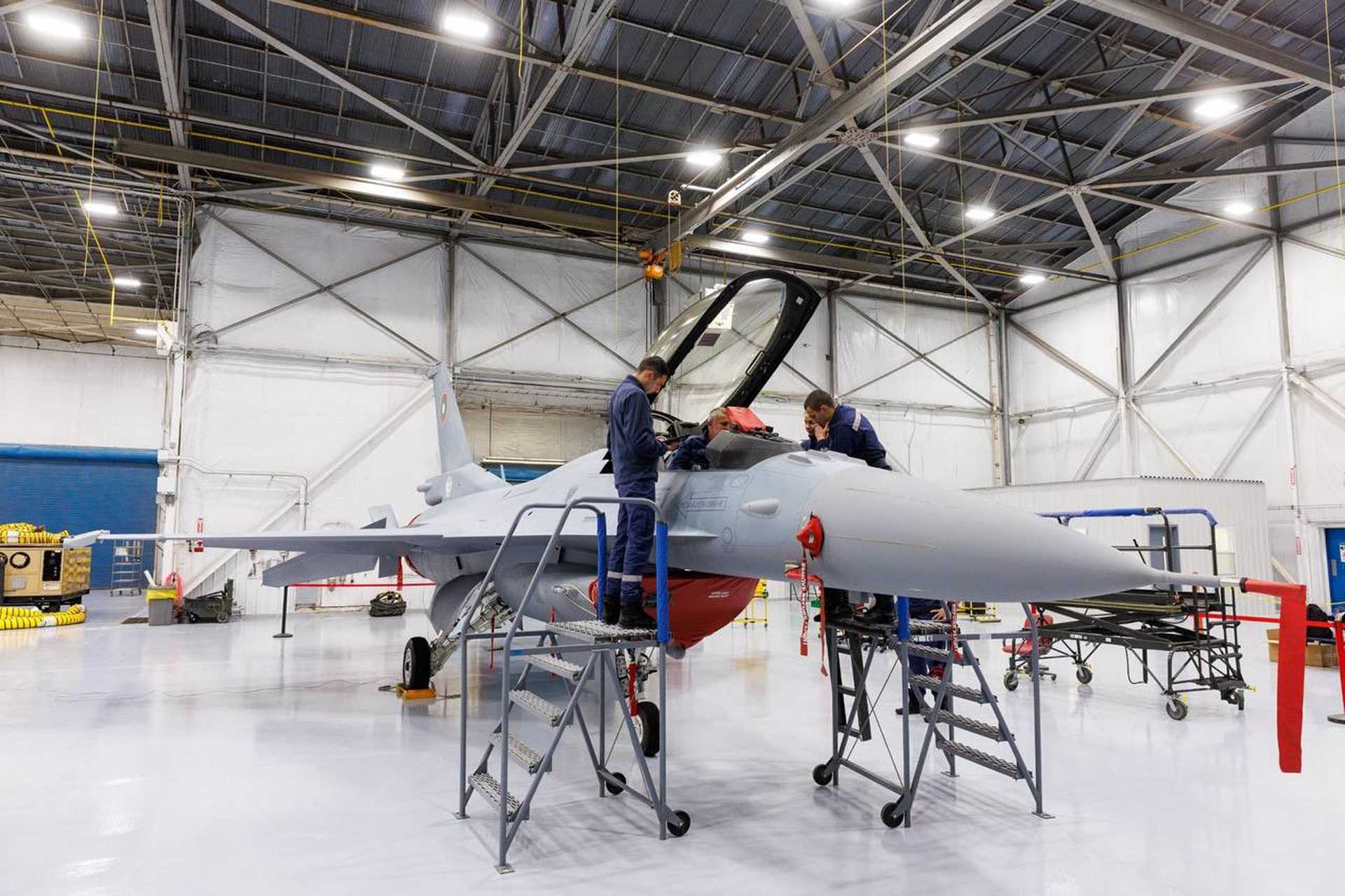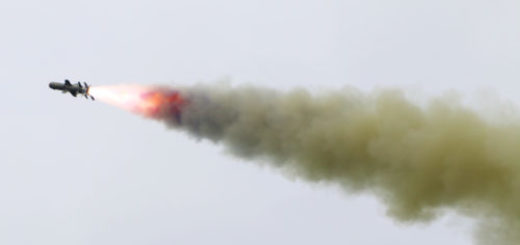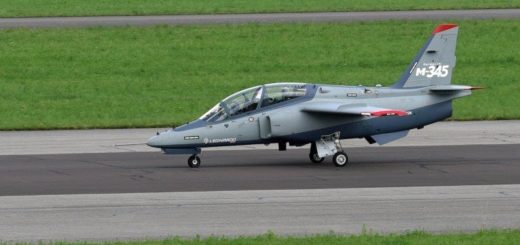Lockheed Martin delivers first F-16 Block 70 fighter to Bulgaria as the country replaces aging Russian-made jets

{loadposition bannertop}
{loadposition sidebarpub}
On January 31, 2025, the Bulgarian Ministry of Defense announced that the country’s Defense Minister Atanas Zapryanov was on a three-day visit to the United States, leading a delegation to attend the official handover ceremony of Bulgaria’s first F-16 Block 70 fighter jet. The event, scheduled for the same day, was set to take place at Lockheed Martin’s facility in Greenville, South Carolina. This marks the beginning of Bulgaria’s acquisition of 16 F-16 Block 70 aircraft under contracts signed in 2019 and 2022. The first two jets are scheduled to arrive in Bulgaria by April 2025, with the remaining aircraft from the first batch expected by the end of the year.Follow Army Recognition on Google News at this link
Bulgaria’s decision to acquire the F-16 Block 70 is part of a long-standing effort to replace its aging Russian fleet of twelve MiG-29s and seven Sukhoï Su-25s. (Picture source: Bulgarian MoD)
Bulgaria’s decision to acquire the F-16 Block 70 is part of a long-standing effort to replace its aging Russian fleet of twelve MiG-29s and seven Sukhoï Su-25s. Since 2012, Bulgaria has considered various procurement options, including second-hand Gripens, Eurofighters, and F-16s from different sources. Financial and political delays postponed the decision until December 2018, when Bulgaria selected the U.S. offer for eight F-16 Block 70 fighters, a choice that aligned with its NATO commitments. The first contract, signed in 2019, covered eight aircraft, including six single-seat F-16C models and two twin-seat F-16D models. The second contract in 2022 expanded the procurement to a full squadron of 16 jets, bringing the total cost to approximately $3 billion.
Bulgaria’s acquisition process involved evaluating multiple aircraft options over several years. Discussions began in 2012 but faced setbacks due to shifting governmental priorities and budgetary limitations. The selection of the F-16 Block 70 was finalized in 2019, with the first contract covering six single-seat F-16C models and two twin-seat F-16D models. The second contract, approved in 2022, increased the fleet to 16 aircraft, creating a full squadron. This procurement aims to ensure Bulgaria’s long-term capability in line with NATO air defense requirements.
The F-16 has been in service since the late 1970s, initially designed as a lightweight air superiority fighter and later evolving into a multirole aircraft with enhanced avionics, radar, and weapons capabilities. The Block 70/72 variant, also known as the F-16V, represents the latest evolution of the platform, incorporating modern upgrades to avionics, radar, and electronic warfare systems. These modifications are designed to improve operational effectiveness and interoperability, making it suitable for 21st-century air combat. The aircraft is widely used by NATO and allied air forces due to its adaptability, availability, and combat-proven effectiveness.
The F-16 Block 70 is equipped with the Northrop Grumman AN/APG-83 Active Electronically Scanned Array (AESA) radar, based on technology derived from fifth-generation fighters. It includes a high-resolution 6×8-inch Center Pedestal Display, an upgraded mission computer, and the Viper Shield electronic warfare suite with a digital radar warning receiver. The aircraft also features an Automatic Ground Collision Avoidance System (Auto-GCAS) to improve pilot safety. Its structural service life has been extended to 12,000 flight hours, making it a long-term investment for air forces worldwide.
With an empty weight of 9,207 kilograms, the F-16 Block 70 is a single-engine, multirole fighter aircraft with a length of 15.03 meters, a wingspan of 9.45 meters, and a height of 5.09 meters. Powered by either the Pratt & Whitney F100-PW-229EEP or the General Electric F110-GE-129 engine, each producing approximately 29,000 pounds of thrust, the F-16 Block 70 can reach speeds exceeding Mach 2, a range of 579 km for interdiction missions, a range of over 1,700 kilometers in an air-to-air configuration, and a ferry range of 3,940 km with external fuel tanks. Its armament includes a 20mm M61 Vulcan cannon, AIM-120 AMRAAM, and AIM-9 Sidewinder air-to-air missiles, as well as GBU-39/B Small Diameter Bombs (SDBs).
As of January 2025, over 4,588 F-16 Fighting Falcons have been produced, with Lockheed Martin holding a backlog of approximately 128 aircraft and planning to produce up to 48 units annually. With over 200 confirmed orders, the F-16 Block 70/72 has been chosen by Bahrain, Bulgaria, Slovakia, Taiwan, Morocco, and Türkiye. Bahrain has received its full order of 16 Block 70 aircraft, while Slovakia has started receiving deliveries from its order of 14. Türkiye is acquiring 40 F-16 Block 70 aircraft while opting to modernize existing jets domestically. Additionally, nations such as Colombia, Indonesia, Poland, and the Philippines have been identified as potential future operators of the Block 70 variant.

{loadposition bannertop}
{loadposition sidebarpub}
On January 31, 2025, the Bulgarian Ministry of Defense announced that the country’s Defense Minister Atanas Zapryanov was on a three-day visit to the United States, leading a delegation to attend the official handover ceremony of Bulgaria’s first F-16 Block 70 fighter jet. The event, scheduled for the same day, was set to take place at Lockheed Martin’s facility in Greenville, South Carolina. This marks the beginning of Bulgaria’s acquisition of 16 F-16 Block 70 aircraft under contracts signed in 2019 and 2022. The first two jets are scheduled to arrive in Bulgaria by April 2025, with the remaining aircraft from the first batch expected by the end of the year.
Follow Army Recognition on Google News at this link
Bulgaria’s decision to acquire the F-16 Block 70 is part of a long-standing effort to replace its aging Russian fleet of twelve MiG-29s and seven Sukhoï Su-25s. (Picture source: Bulgarian MoD)
Bulgaria’s decision to acquire the F-16 Block 70 is part of a long-standing effort to replace its aging Russian fleet of twelve MiG-29s and seven Sukhoï Su-25s. Since 2012, Bulgaria has considered various procurement options, including second-hand Gripens, Eurofighters, and F-16s from different sources. Financial and political delays postponed the decision until December 2018, when Bulgaria selected the U.S. offer for eight F-16 Block 70 fighters, a choice that aligned with its NATO commitments. The first contract, signed in 2019, covered eight aircraft, including six single-seat F-16C models and two twin-seat F-16D models. The second contract in 2022 expanded the procurement to a full squadron of 16 jets, bringing the total cost to approximately $3 billion.
Bulgaria’s acquisition process involved evaluating multiple aircraft options over several years. Discussions began in 2012 but faced setbacks due to shifting governmental priorities and budgetary limitations. The selection of the F-16 Block 70 was finalized in 2019, with the first contract covering six single-seat F-16C models and two twin-seat F-16D models. The second contract, approved in 2022, increased the fleet to 16 aircraft, creating a full squadron. This procurement aims to ensure Bulgaria’s long-term capability in line with NATO air defense requirements.
The F-16 has been in service since the late 1970s, initially designed as a lightweight air superiority fighter and later evolving into a multirole aircraft with enhanced avionics, radar, and weapons capabilities. The Block 70/72 variant, also known as the F-16V, represents the latest evolution of the platform, incorporating modern upgrades to avionics, radar, and electronic warfare systems. These modifications are designed to improve operational effectiveness and interoperability, making it suitable for 21st-century air combat. The aircraft is widely used by NATO and allied air forces due to its adaptability, availability, and combat-proven effectiveness.
The F-16 Block 70 is equipped with the Northrop Grumman AN/APG-83 Active Electronically Scanned Array (AESA) radar, based on technology derived from fifth-generation fighters. It includes a high-resolution 6×8-inch Center Pedestal Display, an upgraded mission computer, and the Viper Shield electronic warfare suite with a digital radar warning receiver. The aircraft also features an Automatic Ground Collision Avoidance System (Auto-GCAS) to improve pilot safety. Its structural service life has been extended to 12,000 flight hours, making it a long-term investment for air forces worldwide.
With an empty weight of 9,207 kilograms, the F-16 Block 70 is a single-engine, multirole fighter aircraft with a length of 15.03 meters, a wingspan of 9.45 meters, and a height of 5.09 meters. Powered by either the Pratt & Whitney F100-PW-229EEP or the General Electric F110-GE-129 engine, each producing approximately 29,000 pounds of thrust, the F-16 Block 70 can reach speeds exceeding Mach 2, a range of 579 km for interdiction missions, a range of over 1,700 kilometers in an air-to-air configuration, and a ferry range of 3,940 km with external fuel tanks. Its armament includes a 20mm M61 Vulcan cannon, AIM-120 AMRAAM, and AIM-9 Sidewinder air-to-air missiles, as well as GBU-39/B Small Diameter Bombs (SDBs).
As of January 2025, over 4,588 F-16 Fighting Falcons have been produced, with Lockheed Martin holding a backlog of approximately 128 aircraft and planning to produce up to 48 units annually. With over 200 confirmed orders, the F-16 Block 70/72 has been chosen by Bahrain, Bulgaria, Slovakia, Taiwan, Morocco, and Türkiye. Bahrain has received its full order of 16 Block 70 aircraft, while Slovakia has started receiving deliveries from its order of 14. Türkiye is acquiring 40 F-16 Block 70 aircraft while opting to modernize existing jets domestically. Additionally, nations such as Colombia, Indonesia, Poland, and the Philippines have been identified as potential future operators of the Block 70 variant.






